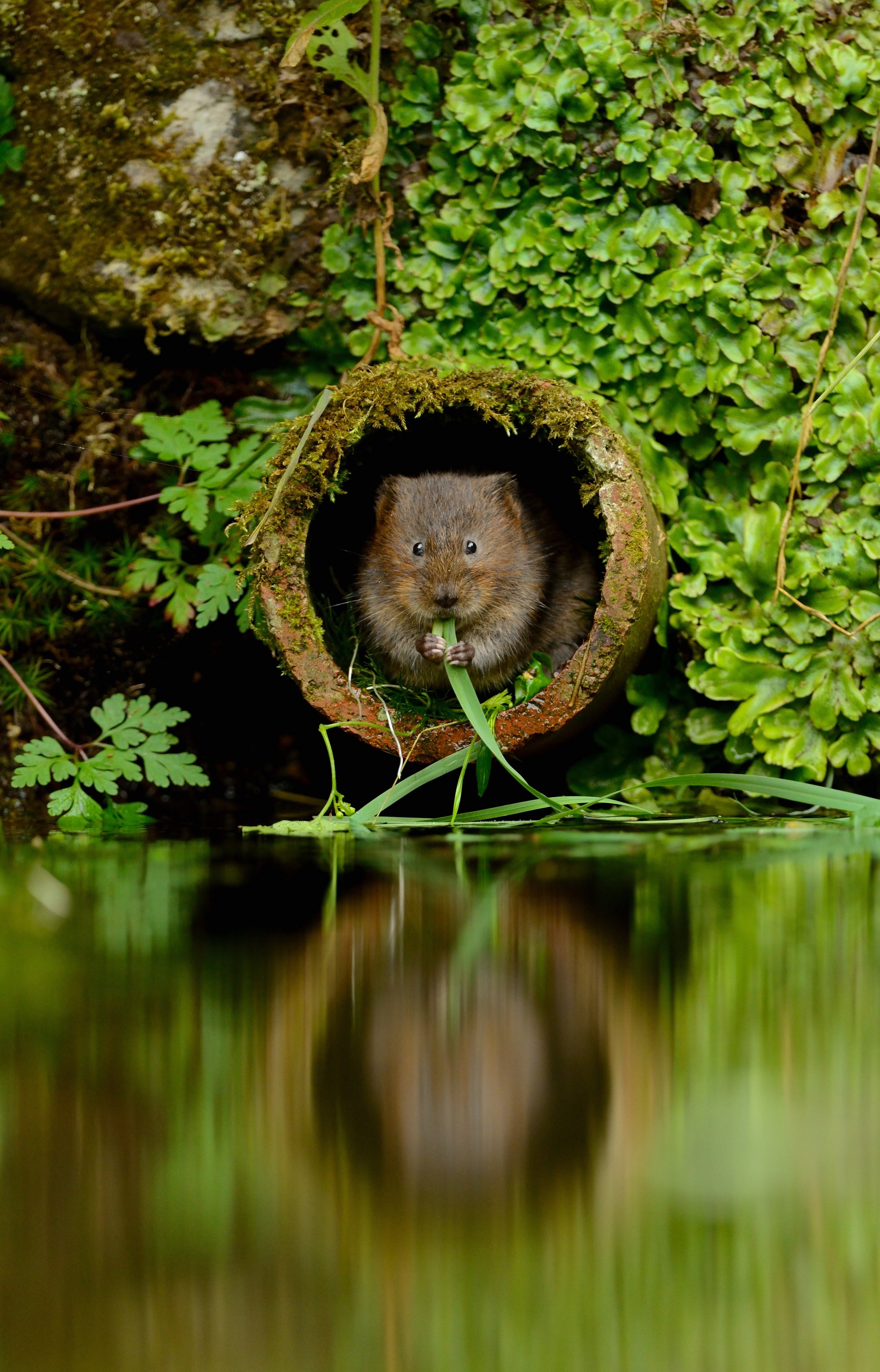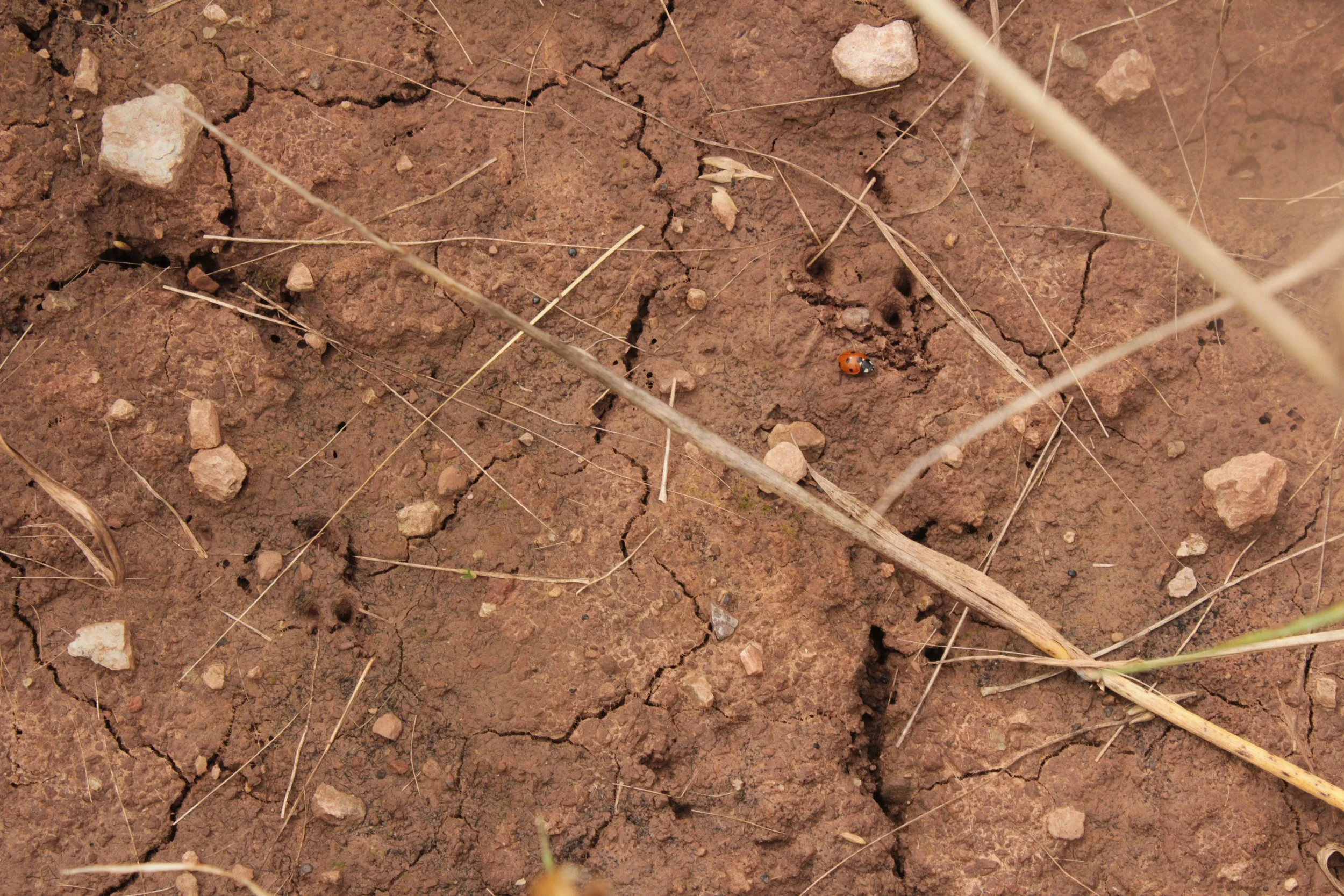Home / British mammals / Water vole
Water vole
Scientific name: Arvicola amphibius
"A brown little face, with whiskers... Small, neat ears and thick silky hair... It was the Water Rat!"
- The Wind in the Willows by Kenneth Grahame (1908). The ‘water rat’ here is actually a water vole.
Water voles are one of the UK’s most threatened species due to habitat loss and predation by the invasive American mink. They have blunt noses, small ears, and furry tails, and like to live near waterways – those lucky and patient enough to try and observe them may be rewarded by the sound of a ‘plop’ as a water vole enters the water.
Taxonomy chart
Animalia - Chordata - Mammalia - Rodentia - Cricetidae - Arvicola - Arvicola amphibius
Conservation status: UK Red List
GB: Endangered
England: Endangered
Scotland: Near Threatened
Wales: Endangered
Global: Least Concern
Summary
Diet: Grasses, waterside plants, twigs, bulbs, roots and fallen fruit
Habitat: Rivers, streams, ditches, marshes, wetland
Size: Weight: 150-300g, Size: 14-22cm with a 9.5-14cm tail
Lifecycle: 0.5-1.5 years
Conservation concerns: Habitat loss and fragmentation, predation by American mink
Terminology
Pup: A baby water vole
Fragmentation: Habitats being broken up into smaller, disconnected pieces
Ecosystem engineer: A species that creates or alters habitats or their environment
Geography
The water vole is widespread throughout mainland UK, but its range and numbers have significantly declined since the mid 20th century. It is absent from the Channel Islands, Isles of Scilly, Scottish islands, Northern Ireland and the Isle of Man. Water voles can be found living along rivers, streams and ditches, around ponds and lakes, and in marshes, reedbeds and areas of wet moorland.
Biology
Water voles have a body length of 14-22cm, and their tails measure 9.5-14cm. They weigh 150-300g and have an average lifespan of 6 months to 1.5 years. Water voles have chestnut-brown fur, a blunt and rounded nose, a furry tail and small ears. In Scotland, many water voles have a black coat. The breeding season for water voles is from April until October. Successful mating is extremely important since during winter, up to 70% of water voles die from a combination of factors mostly due to predation, but also less so from starvation and flooding. The gestation period for pups is 23 days. Pups are weaned at 14 days, leave the nest after 3 weeks, and are ready for mating at only 15 weeks old. A female vole has between 5-6 litters in a year, and each litter will have 3-5 pups.
Ecology
Water voles need to eat up to 80% of their body weight on a daily basis to stay healthy. They mainly eat grasses, waterside plants, twigs, bulbs, roots, and fallen fruits. Their diets are broad, and water voles have been recorded eating over 220 different plants! Occasionally, they include molluscs and small fish in their diet; especially when boosting protein levels when feeding pups (when they have also been recorded seeking protein-rich pollen).
Water voles appear along the well-vegetated banks of slow-flowing rivers, ditches, dykes and lakes. They live in extensive burrow systems dug into the banks of waterways; these are roughly the width of a tennis ball. The burrows are built by the water voles biting into the banks using their strong and orange-coloured teeth. There are sleeping, nesting, and nursing chambers at various levels in the steepest parts of the bank and usually at least two entrances: one on the bank and one underwater, which gives the water voles a secure route to escape threats. ‘Lawns’ of closely cropped grass, occasionally with piles of chopped food, sometimes surround the entrances. During breeding season, female water voles are very territorial, but during winter they live closer together.
Water voles are a vital part of river ecosystems and are even classified as ecosystem engineers. As well as being a key prey species for a number of native predators, their burrowing can help promote soil microbial activity, drainage, and soil quality. Their grazing can increase bankside biodiversity by reducing the domination of any singular plant species, and they have a positive impact on floral diversity by cropping grasses and dispersing seeds and pollen.
Water voles are more active during the day than at night. The range of activity varies between males and females: males live along around 60-300m of water bank, whereas females have a range of 30-150m. Latrines, which are a pile of droppings, occur throughout and at the edges of their range during the breeding season.
Conservation
Water voles are endangered in Great Britain and England according to the UK Red List. They are protected in the UK under the Wildlife and Countryside Act 1981 and are a Priority Species under the UK Post-2010 Biodiversity Framework. Unfortunately, water voles are one of the UK’s fastest declining mammals: their population has declined by as much as 90% since the 1970s. This process started back to the Middle Ages, although the American mink is a key driver behind the most recent decline of water voles. The American mink comes from North America, where its diet consists mostly of muskrats. When American minks were introduced into the UK in the 1960s after fur farms were closed, they started hunting water voles, which resemble muskrats. Although water voles have many predators who eat them, these are native species, and the water vole has adapted to them through high birth rates and escaping into their burrows. Yet female American mink are slim enough to enter these burrows and hunt water voles, decimating entire families.
Water voles are also threatened by habitat loss and fragmentation, which can be caused by overgrazing, the mowing of riverbanks and canalisation of streams. It is likely that they also suffer from poor water quality, both directly through contamination of water bodies with pollutants and indirectly through eutrophication, the build-up of nitrogen levels in water which causes algal blooms and loss of their food plants.
History
Water voles arrived in two stages in the UK; there is evidence that the first lineage was around before the Last Glacial Maximum, around 22,500 years before present, and the second lineage colonised Britain around 8,000-12,000 years before present, replacing the first lineage across most of the UK, bar some areas of Scotland (where to this day, black water voles can still be found).
For the longest time, water voles were a common sight in the UK. This changed during the early 20th century, when agricultural intensification and canalisation of water ways after World War 2 lead to habitat loss, fragmentation, and degradation of water vole habitats. Another important factor for the decline in water vole populations was the introduction of the American mink. American mink fur farms were established from the 1920s, to a peak of over 400 farms in the 1950’s. Inevitably some individuals escaped, and, combined with purposeful releases during the late 1990’s of up to several thousand animals at once, American mink began to thrive in the wild. By the 1990s, water voles had almost completely disappeared from the landscape.
In British folklore, water voles are sometimes seen as guardians of aquatic environments. In this capacity, they symbolise protection and stewardship of nature. In the past, they were also designated by the Catholic church as fish and thus could be consumed during fast days. In the 20th and 21st century, children’s books such as the Wind in the Willows, the Sleepy Water Vole and more recently River Singers featured water voles.
How to identify
Footprints: Forefeet leave star-shaped prints
Feeding signs: Nibbled stalks of grass in small piles along tunnels in long grass, stems with a distinctive 45° angled cut by the water's edge. Where there are dense populations or where a female has dependent pups, piles of nibbled vegetation can be found at the entrance to burrows by coincidence.
Droppings: Latrines of rounded, tic-tac sized and shaped droppings with rounded ends. Droppings are usually black, green, or brown.
Surveying period: January - December
Recommended reading
Creating ponds for water voles guide
Reporting a water vole sighting
Frequently asked questions
-
Sometimes. Garden ponds can provide a good habitat for water voles, but often these are too isolated and small.
-
Occasionally, since their diets mostly consist of grasses and other waterside plants. They also eat things like twigs, bulbs, roots, and fallen fruit. However, a pregnant or lactating water vole might indulge in eating caddisflies and water snails to boost her protein levels.
-
Yes. Water voles are strong swimmers over short distances and dive well, and when walking near bodies of water, they can be heard ‘plopping’ into the water. This said, they are waterside mammals and live most of their lives on land, as they do not have the physiological adaptations evident in beavers and water shrews, and don’t commonly hunt or forage on the waterways. For example, water vole fur isn’t waterproof so can get waterlogged very quickly. They mainly live by waterways for an easy escape from native predators!
-
Report the sighting to a nature organisation and leave the water vole alone. They are one of the UK’s most threatened species, so it is important to record where they remain and are sighted.
Confusion species
Brown rat (Rattus norvegicus)
Grey/brown coat on top with grey underside, compared to chestnut brown colour of water vole. More pointed muzzle than water vole, which has more of a blunt muzzle. Hairless tail, 90% length of body, proportionately longer than water vole’s, which is 60%. Rat ears are bigger and much more prominent than water voles, which are very subtle, usually covered by fur.
Field vole (Microtus agrestis)
Much smaller than water vole, with head and body length of 9-12cm, compared with 14-22cm for water vole. Yellowish or grey/brown, much lighter than water vole which has darker chestnut brown fur. Tail shorter than water vole tail, only 30% length of head & body, whilst water vole’s is 60%.
Bank vole (Myodes glareolus)
Bank vole much smaller than water vole with head and body length of 9-11cm compared to 14-22cm. Water vole tail is slightly longer than that of bank vole, with it being 60% head and body length compared to 50%.
Identify sounds
Heard a curious animal sound but no idea whose making it?
Wildlife identification FAQ
Still not sure what you’ve found? Head over to our FAQ for an answer.








